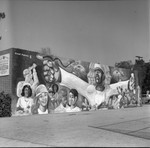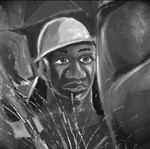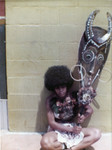Description
Although a gifted and celebrated architect, painter, poet and engineer, Michelangelo Buonarroti thought of himself first and foremost as a sculptor. He believed that sculpture was superior to painting because the sculptor participates in the divine power of making man. One of his best-known observations is that a sculptor must find the image locked in the stone. He differed from his contemporaries in his mistrust of mathematical canons as a means to guarantee proportion and beauty, instead relying on his own eyes and instincts. This statue, depicting a captive or slave, is one of the unfinished statues meant for an early version of Pope Julius VI’s tomb that was later abandoned. Scholars are uncertain about this sculpture (and three other 'slave' figures) and some have doubted its connections to Julius' tomb or its identification as a slave or captive. However, it is clear that in this group of sculptures, Michelangelo created figures embodying intense emotional states assoc
Green, Jon D., 1940Brigham Young University
Public Domain; Need to Request





















